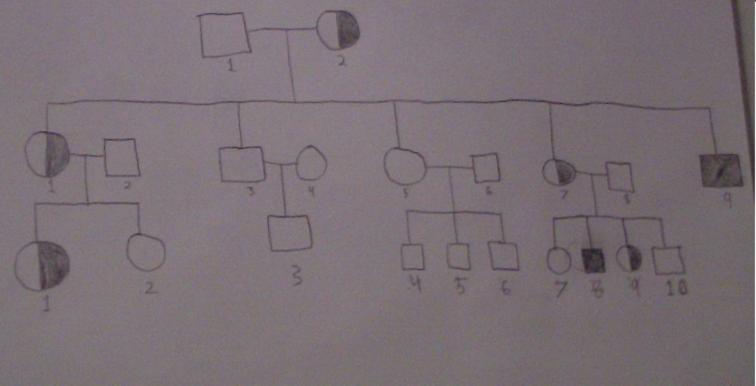Genetics and biochemistry of Lesch-Nyhan syndrome This is a biochemical pathway chart depicting the loss of HPRT. As I explained in the biochemistry video, you can follow this pathway to see why there is an overproduction of lactic acid and why HPRT is so important. (a)
|
|
Genetics and Inheritance
 |
Lesch Nyhan Syndrome in Mice?
Environmentally-influenced and Epigenetically Influenced Symptom Expression
The article "Mechanisms for phenotypic variation in Lesch–Nyhan disease and its variants" talked about a mutation in the HPRT gene that caused different symptoms in different individuals, despite the fact that the mutation was exactly the same. 10 individuals from 8 different families with an identical HPRT mutation were studied. A lot of variation was seen between the individuals. None of the individuals had full-blown Lesch-Nyhan Disease, instead they typically had a milder condition called HGprt-related neurologic dysfunction (HND) while one had HGprt-related hyperuricemia (HRH), the mildest of the three conditions. The age that the symptoms were expressed varied greatly, from infancy to 28 years old.
The evidence from the research seems to indicate that the reason there is a lack of HPRT enzyme activity is that the mutation causes the enzyme to experience extreme heat sensitivity. Early in development, when enzyme activity is most crucial, events such as fevers would have had particularly large impacts on the young, developing, individual.
The authors also noted that lack of protein-repair mechanisms can potentially impact enzyme activity, resulting in more severe symptoms.
http://www.ncbi.nlm.nih.gov/pmc/articles/PMC3034646/
Frequency of Lesch-Nyhan occurrence.
According to the NIH "The prevalence of Lesch-Nyhan syndrome is approximately 1 in 380,000 individuals. This condition occurs with a similar frequency in all populations." (d)
This is not surprising from a population genetics perspective since affected families likely have each had their own unique mutation event that lead to LND. This is due to the fact that strong environmental factors tend to prevent alleles that cause extremely harmful phenotypes from becoming common in a population.
(b) http://www.omim.org/entry/300322
(c) http://www.ncbi.nlm.nih.gov/pmc/articles/PMC1706393/
